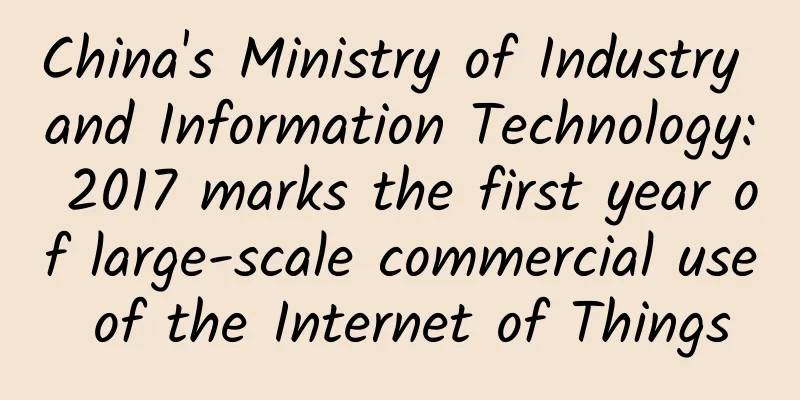5G healthcare has attracted much attention, but three points need to be paid attention to in its development

|
It has been more than a year and a half since my country officially launched 5G commercial use. According to the latest data from the Ministry of Industry and Information Technology, my country has built a total of 718,000 5G base stations, promoted the joint construction and sharing of 330,000 5G base stations, and basically achieved 5G network coverage in all provinces, cities and towns. At the same time, the number of 5G terminal connections is close to 200 million, and the number of 5G users exceeds 120 million.
Overall, my country's 5G has made good progress in both the network and terminal sides. In 2021, my country's 5G development will enter a critical period of application innovation. So in the future, which fields will be the best choice for 5G implementation? Previously, according to a relevant person in charge of Huawei, my country's 5G applications have penetrated into 19 industries, among which 5G and medical treatment have a strong response. As we all know, there are many problems with the current medical care in my country. On the one hand, medical manpower and equipment resources are limited and unevenly distributed across regions. Many people are faced with problems such as "difficulty in seeing a doctor, high medical costs, and slow medical treatment"; on the other hand, the current medical technology level, efficiency, and service are not high, and hospitals are under great pressure in operating costs. The development of the industry has become increasingly unable to meet people's needs. In this context, smart healthcare has become a key to breaking through the industry, and 5G is a catalyst for the realization of smart healthcare. Through the construction of high-speed, low-latency, and large-capacity 5G networks, remote consultation, remote surgery, remote monitoring, intelligent guidance, emergency rescue, AI-assisted diagnosis, smart hospital management, VR visits, etc. will become a reality, with a very significant effect. In short, with the help of 5G, traditional medical care can make full use of limited medical manpower and equipment resources, give full play to the advantages of medical technology, and solve the problems of insufficient medical level and efficiency; at the same time, it can also accelerate the sharing of medical resources and solve the problem of patients' difficulty in seeing a doctor caused by the imbalance of medical care in various places through the informatization, mobility and remoteness of medical services. Based on this, provinces, cities and enterprises in my country have been increasingly actively participating in the 5G smart medical track since 2020. Recently, many departments and provinces and cities, including the Ministry of Industry and Information Technology and the National Health Commission, Shanghai, Shanxi, Yunnan, Zhejiang, Hunan, Hebei, Sichuan, etc., have started to apply for 5G+ medical and health application pilot projects to cultivate new 5G medical products, formats and models. At the same time, some companies have also begun to increase their layout in this field. According to the Economic Information Daily, Zhizhen Technology, Hanxing Technology, Chuangye Huikang, and Hejia Medical are actively participating in 5G+ medical-related projects and launching corresponding products. In addition, public information shows that listed companies such as Weining Health, Nanjing Pharmaceutical, and Fosun Pharma have also begun to deploy. The latest report from the China Academy of Information and Communications Technology shows that the scale of my country's smart medical industry has exceeded 100 billion yuan in 2020, and is expected to reach 125.9 billion yuan in 2021. The industry will enter a period of rapid growth with intelligent, efficient and large-scale development. Against this background, more than 500 hospitals in Ang have deployed 5G networks to carry out 5G medical pilot projects, which will undoubtedly usher in huge development space. However, although the 5G smart healthcare track is becoming increasingly popular, and its prospects and potential are constantly emerging, it is not easy to truly realize the blue ocean. Because the construction of 5G base stations and private networks is not easy, and the cost is high, the charging and model of related applications are still difficult for consumers to accept, which makes the implementation and popularization of 5G applications face many problems. In this context, my country's 5G medical applications still need to focus on three aspects in order to achieve mature development. The first is to accelerate the construction of 5G base stations, improve 5G network coverage, and reduce the cost and price of 5G applications; the second is to accelerate 5G technology research and improve the security and reliability of 5G applications; the third is to strengthen industry standards and supervision to create a healthy and orderly environment for industry applications. |
<<: IDC: Private LTE/5G Infrastructure Market to Reach $5.7 Billion in 2024
Recommend
CNCF TOC Committee Member Zhang Lei: What has the evolving cloud native brought us?
[[412417]] What is cloud native? Even though the ...
CMIVPS 3rd Anniversary Event: 50% off on all VPS hosts with limited annual payment
A few days ago, we shared CMIVPS's regular pr...
Spectrum analysis of the four major 5G operators in China, who has the best resources?
As we all know, starting from 5G, the country has...
iOVZ Valentine's Day Promotion: 30% off all VPS/50% off Korean dedicated servers, Los Angeles/Korea VPS monthly payment starts from 42 yuan
iOVZ has just launched a Western Valentine's ...
Reshaping Wi-Fi Infrastructure for the Future of IoT
As the digital age continues to evolve, a major c...
SD-WAN first or security first?
[[419685]] The right secure access service edge (...
How does machine learning help 5G networks?
Machine Learning Machine learning is a field of e...
What are LACP and PAGP? What are the differences?
In order to create maximum availability and stabi...
Widespread adoption of smart homes drives rapid growth in the Wi-Fi router market
Market research firm Technavio released a latest ...
KhanWebHost: $1/month KVM-2GB/10GB SSD/1TB/Dallas Data Center
Need to practice VPS hosting? You can take a look...
RackNerd June Promotion: 1.5G memory VPS annual payment starts at $15.78, multiple data centers in San Jose/Seattle, etc.
RackNerd released a promotional package for June,...
Soul-searching question for TCP: Are you going to surrender?
TCP three-way handshake packet loss What happens ...
One year after 5G commercialization, the terminal hardware market still has ten times more room to grow
In nine days, China's 5G commercialization wi...
The mobile phone number card market is too difficult to operate. Why is it so difficult? What should we do?
Yesterday, I was chatting with a friend who works...
Keda joins hands with Ningxia Public Security Bureau to deepen the reform of "delegating power, deregulating and serving the people".
On November 27, the National Public Security Orga...









